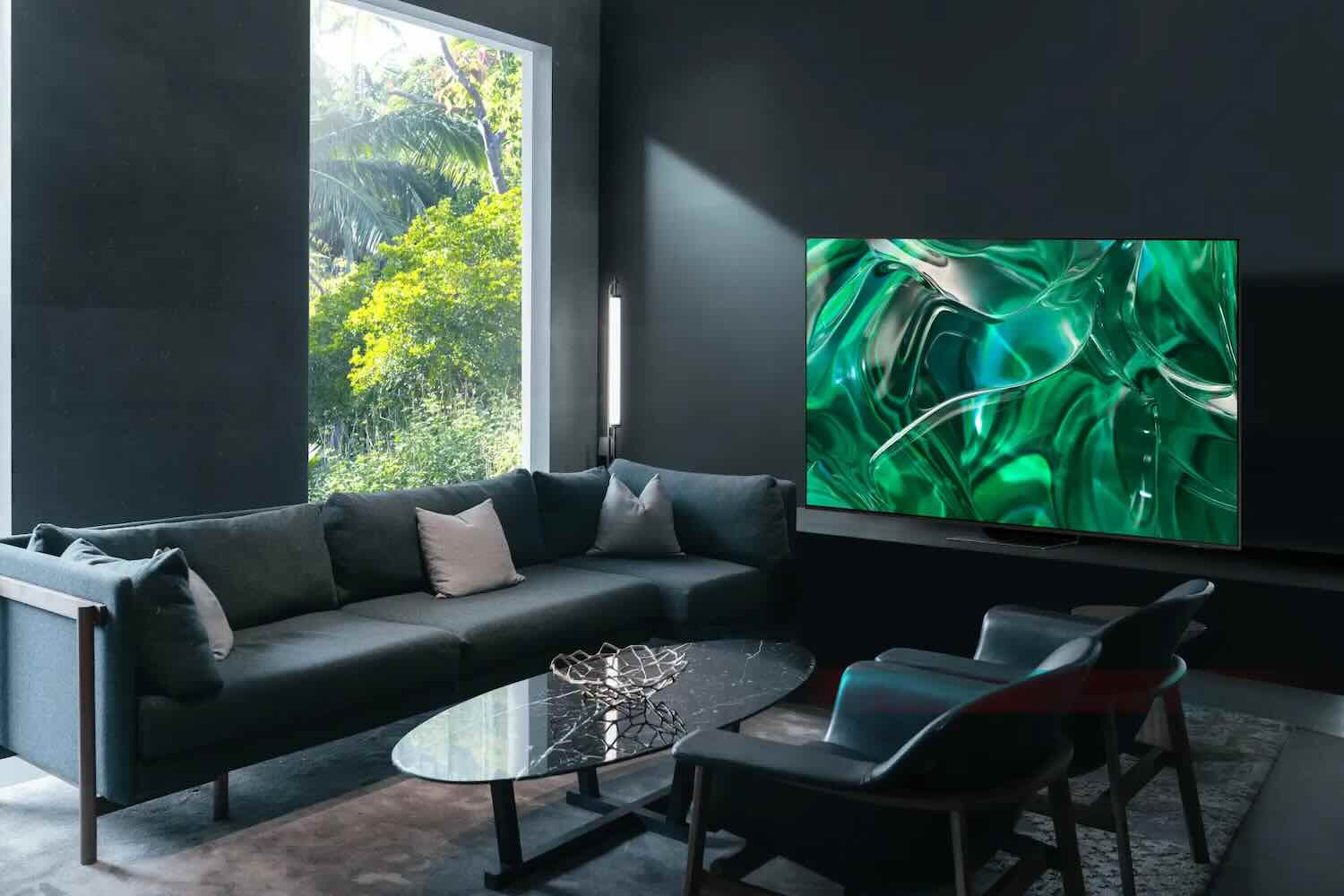
When choosing a new TV, most people look at the features first. Some TVs feature 4K resolution, while others have 8K. You’ll find TVs with HDMI 2.1 inputs, TVs with gaming menus, and others with 120Hz refresh rate. There are also different backlights including OLED, Mini-LED, and LED. The TV you choose will have the features that matter most to you, and one feature that’s often overlooked when you’re making your decision is TV viewing angles.
What are TV viewing angles?
Everyone’s living room looks different. You may have a large, open-concept living room with several couches placed near the TV, or you may have a smaller living room with just one couch and a few chairs. Because of space constraints, most people can’t put their couch directly in the center of their TV or have the TV placed the exact distance away from the couch for optimal viewing. That’s why viewing angles are so important.
The viewing angle refers to how far off you are from the direct line of sight of your TV. Imagine that your TV is located right in front of your couch and you have a protractor to measure degree. If you took a measurement of your couch to TV placement when it’s directly in line with your TV, that would be zero degrees. If you move the couch 5 degrees to the left or right, it would be considered 5 degrees off-axis or off-zero. If you can sit off-axis in your room by 5 or 10 degrees and still enjoy the same picture quality as if you were sitting in direct line with the TV, your TV would have excellent viewing angles. They would be even better if you could sit 60 or 70 degrees off-axis and still enjoy the same picture quality.
Long story short, a display with great viewing angles looks just as good when you’re sitting beside it as when you’re sitting in front of it. A display with poor viewing angles looks greyish or washed out when viewed off-axis.
Which types of TVs have the best viewing angle?

Out of all the new TVs available right now, you’ll find that OLED TVs have the best viewing angles.
OLED TVs are designed with self-illuminating pixels. Each pixel can turn itself off and on individually and can emit light from every direction. Because the pixel can turn off, OLED TVs can reach true black and offer the best contrast ratio possible. Contrast is what is most affected when you view your TV off-axis, so OLED TVs offer extremely wide viewing angles. They also stay bright and colours remain vivid no matter where you sit and watch.
QLED TVs are an option if you still want good viewing angles, but they aren’t quite as wide as OLED TVs. You’ll find the colour, contrast, and brightness may begin to distort when you’re about 50 degrees off-axis.
How important are viewing angles when choosing your new TV?
The viewing angle is important if you have a room that doesn’t fit the traditional ‘couch in front of the TV’ layout. If you need to have a few couches placed around the TV or you need to have seating placed off to the side, viewing angles could be an important feature for you. It may also be important if your TV is not mounted on a full motion TV mount and you can’t move the screen for anyone seated to the side.
How important are viewing angles for you? You can find new TVs that look great in every room in your home right now at Best Buy.




If viewing angles are important for the whole family viewing… is it correct one should skip curved screens?
Comments are closed.